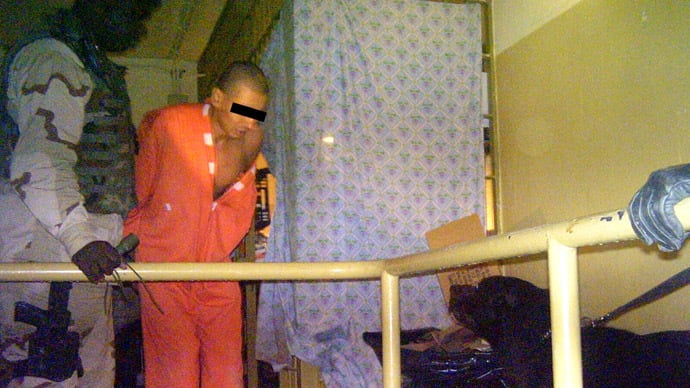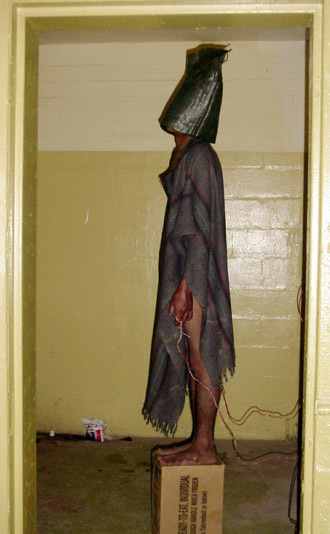Obama Administration Withholding 2,100 US Military Torture Photos

The Obama administration has blocked the public release of disturbing torture photos out of concern they would endanger US troops. Now, a federal judge is giving the government until December to justify its actions.
In addition to the disturbing Abu Ghraib photos released in 2004, an estimated 2,100 images of US military personnel torturing and degrading detainees – possibly even more disturbing – may soon be released into the public realm.
Federal Judge Alvin Hellerstein has given the US Justice Department until December 12 to defend its rationale for withholding each photograph on an individual basis. Hellerstein will then deliver his ruling on the future fate of the photographs after he conducts a review of the government’s case.

Image: This handout photo from Australia’s SBS TV released 15 February, 2006 allegedly shows a prisoner in Iraq’s notorious Abu Ghraib. (AFP Photo/HO/SBS Dateline)
In 2009, President Obama denied release of the photographs on the grounds they would “further inflame anti-American opinion and … put our troops in greater danger.”The move by the president was supported by passage of the Protected National Security Documents Act, which gives the Secretary of Defense the power to keep any photographic images classified if it is believed their release would endanger Americans.
Brush up on the architects of the U.S. torture program [Interactive Infographic] https://t.co/DnWH8aar5g pic.twitter.com/ZklTGysfjp
— ACLU National (@ACLU) October 21, 2014
Marcellene Hearn, an attorney for the American Civil Liberties Union (ACLU), said the release of the photographs would shed some light on US military facilities abroad.
 Image: This handout photo from SBS TV received 15 February, 2006 shows a hooded prisoner allegedly being tortured at Iraq’s notorious Abu Ghraib jail supposely during interrogation by US soldiers in Baghdad in 2004. (AFP Photo/HO/SBS Dateline)
Image: This handout photo from SBS TV received 15 February, 2006 shows a hooded prisoner allegedly being tortured at Iraq’s notorious Abu Ghraib jail supposely during interrogation by US soldiers in Baghdad in 2004. (AFP Photo/HO/SBS Dateline)
“It’s disappointing that the government continues to fight to keep these photographs from the public,” Hearn said after the hearing, as quoted by the Guardian. “The American people deserve to know the truth about what happened in our detention centers abroad. Yet the government is suppressing as many as 2,100 photographs of detainee abuse in Iraq and elsewhere.”
Meanwhile, in a separate case, a Federal District Court earlier this month ordered the release of 28 videotapes reportedly showing the force-feeding of a hunger-striking detainee at Guantánamo Bay detention center, rejecting the government’s assertion that releasing the tapes would risk the lives of troops.
With the United States military conducting air missions in Iraq and Syria, this time to fight against militants of the Islamic State, there will be much greater incentive to keep the disturbing images classified so as not to inflame anti-American passions even more.

